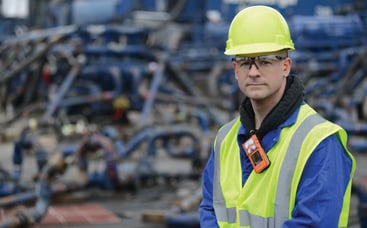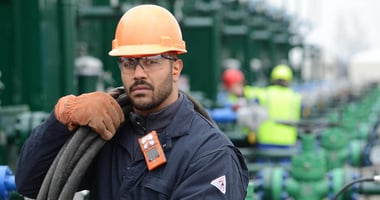Are your workers unknowingly overexposed to hazardous gases—even when they use personal protective equipment?
Safety professionals consider many factors when recommending respiratory protection for workers in environments that may contain toxic gas hazards. One factor that’s also overlooked, however, is the measuring range of the toxic gas detector that workers use for gas hazards.
Why does this matter?
NIOSH recommends different levels of personal protective equipment (PPE) based on the potential exposure in parts per million (ppm).
Let’s consider Ammonia (NH3) as a common example, although the same principle applies to all toxic gas hazards.
In the midwestern United States, food production is big business. Along with food production comes cold storage facilities that use NH3 as a refrigerant. In Wisconsin and Michigan alone, companies use approximately 150 million pounds of Ammonia for cold storage each year—this means hundreds of thousands of workers can be exposed to it. With this in mind, workers use gas detectors and NIOSH guidelines to determine how to properly protect themselves.
For example:
- If the exposure potential is up to 250 ppm of NH3, NIOSH recommends a half mask respirator equipped with a cartridge that provides protection against NH3 or any supplied air respirator.
- If the exposure potential is up to 300 ppm of NH3, NIOSH recommends a supplied air respirator with constant flow or any powered air purifying respirator with a cartridge that provides protection against NH3, or a full-face cartridge respirator, or any full-face canister mask.
- If the exposure potential is greater than 300 ppm, NIOSH recommends a secure closed breathing apparatus (SCBA) or full face supplied air respirator
To accurately determine the exposure, your gas detectors must be able to detect levels in accordance with the NIOSH guidelines for PPE. In this example, your gas detectors must be able to detect NH3 at levels greater than 300 ppm. However, many gas detectors can only measure NH3 from 0-100 ppm. This presents an issue. Without a device that can measure ranges greater than 300 ppm (or the NIOSH recommendation for your specific toxic gas), how does your worker know whether their PPE is providing adequate protection?
To avoid this issue, it’s important to review your gas detector’s measuring range–especially if your environment could contain ammonia (NH3), hydrogen sulfide (H2S), sulfur dioxide (SO2), or carbon monoxide (CO).
In this case, a gas detector with a measuring range above 300 ppm can help your workers determine whether they need to switch into an SCBA while working in that environment. If your gas detectors can’t detect up to 300 ppm of NH3, then workers should wear an SCBA any time there is a chance that levels will exceed the permissible exposure limit of 50 ppm of NH3.
In addition to offering critical safety readings, devices with a higher sensing range generally have a longer life span and can save you money on sensor replacements. Monitors like the Ventis Pro5 generally have higher measuring ranges, making them less susceptible to damage from over ranging and reducing the need for sensor replacement.
Do yourself a favor right now and check the measuring ranges of your gas monitors against your PPE requirements for all toxic gas hazards. If the ranges don’t align with your PPE requirements, you need to consider whether the monitors are providing the detection capabilities your workers need to stay safe at work.



